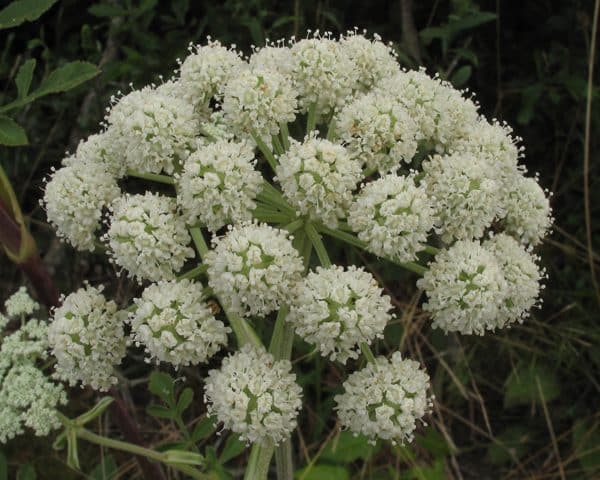With its white, lacy blooms and name, angelica conjures up the ethereal. But did you also know that this summer bloomer is responsible for martinis? A European herb that blooms profusely at this time of year, angelica is used in a variety of liquors, including gin and vermouth. Throughout history, its foliage has also been used to make herbal teas for medicinal purposes.
In the same family as carrots and parsley, Angelica features showy, umbrella-like flowers that make great landing pads for butterflies and bees. The leaves have a musky scent and sweet flavor. The giant roots that resemble large, pale carrots and the plant’s seeds are also edible. Foliage, roots and seeds of angelica can be used to make tea and as seasoning.
To have luck growing angelica in your summer garden, keep the following growing tips in mind.
Ensure adequate drainage. Angelica requires rich, fertile soil with good drainage to do well. Dig a 6- to 8-inch hole in the garden where you wish to plant angelica and fill with water. The water should drain within an hour. If it doesn’t drain, dig compost and pumice into the planting hole and re-test by filling with water again. Even if you do have good drainage, mix compost into the planting hole prior to planting to enrich the soil.
Provide sufficient growing space. Angelica grows 1 to 6 feet tall and will spread 2 to 4 feet wide, if given enough growing space.
Plant in part-shade. Place angelica in a part of the garden that receives some shade in the summer months. Good locations are those that get morning sun and afternoon shade. The plant can also thrive in an area with dappled sunlight throughout the day. The latter is a particularly good location for parts of the country that experience especially hot summers.

(Plant America Nursery)
Water regularly. Keep the soil surrounding angelica moist but not soggy. This is of particular importance during very hot weather. Angelica is not drought tolerant. If allowed to dry out, it will most likely not rebound. Keeping the planting area well weeded also helps to keep weeds from taking water from the plants.
Fertilize occasionally. Angelica benefits from a starter fertilizer when you plant and then another feeding three to four weeks later. Use an organic fertilizer designed for flowering plants.
Dry for tea or flower arrangements. If you wish to dry angelica to make tea leaves or to use the flowers in dried bouquet arrangements, cut flower stalks at the base of the plant during the morning or evening hours. Hang the stalks upside down in a cool, dry area of the home out of direct sunlight. Once the foliage is completely dry, use the flowers for dried arrangements, or store leaves for tea in a metal tin or glass container out of bright light.
Julie Bawden-Davis is a garden writer and master gardener, who since 1985 has written for publications such as The American Gardener, Organic Gardening, Wildflower, Better Homes and Gardens and The Los Angeles Times. She is the author of seven books, including Reader’s Digest Flower Gardening, Fairy Gardening, The Strawberry Story, and Indoor Gardening the Organic Way, and is the founder of HealthyHouseplants.com.

